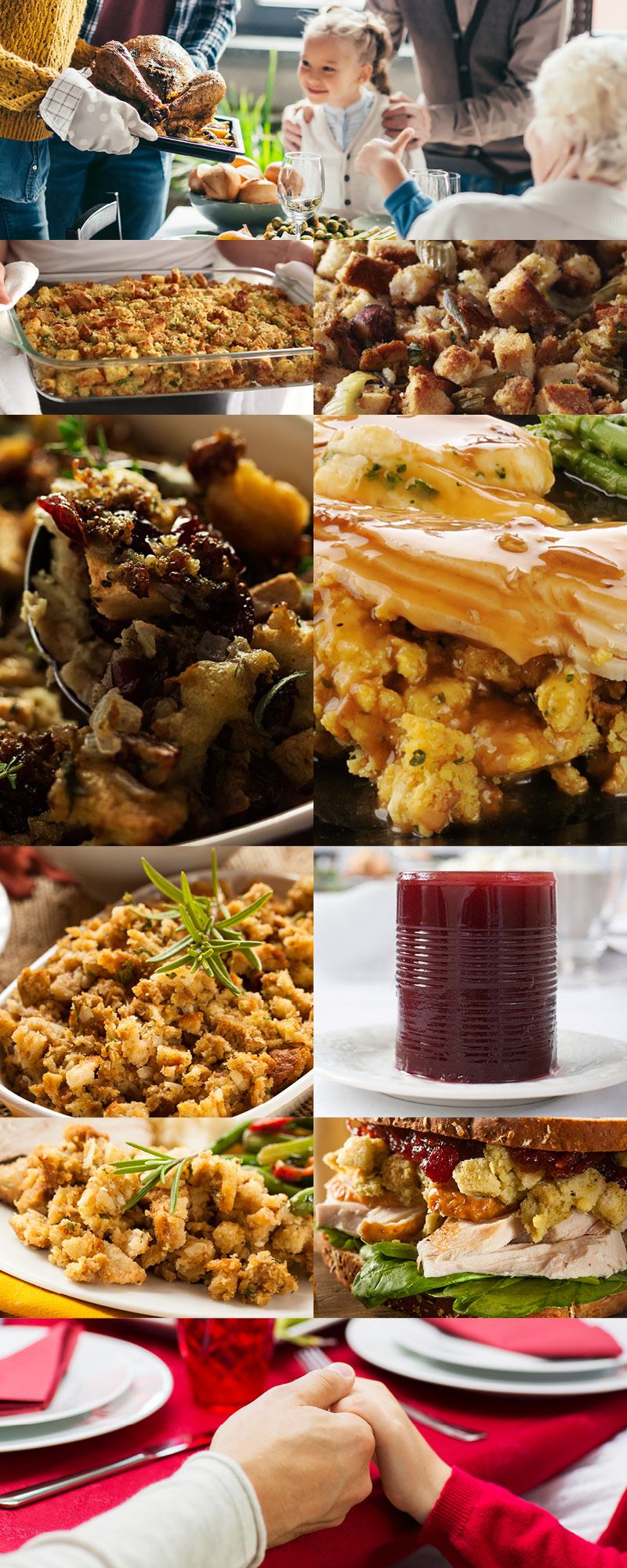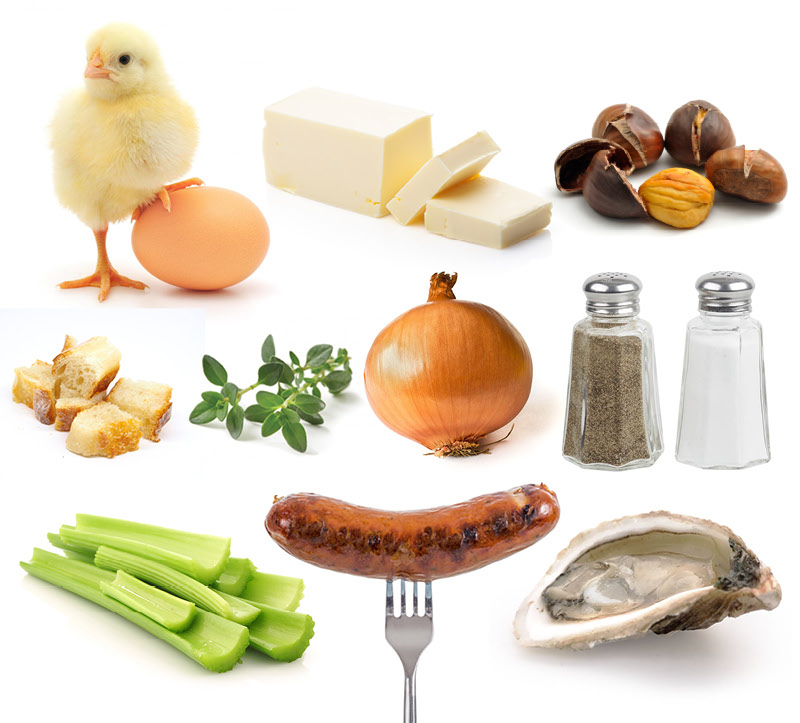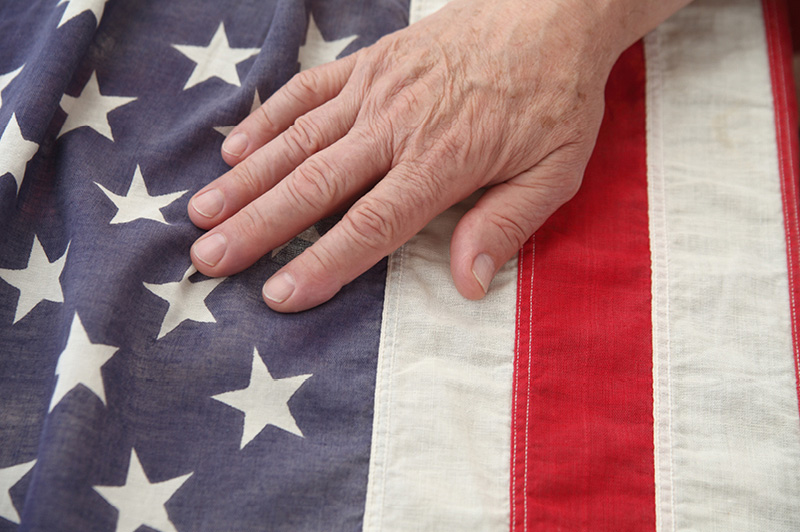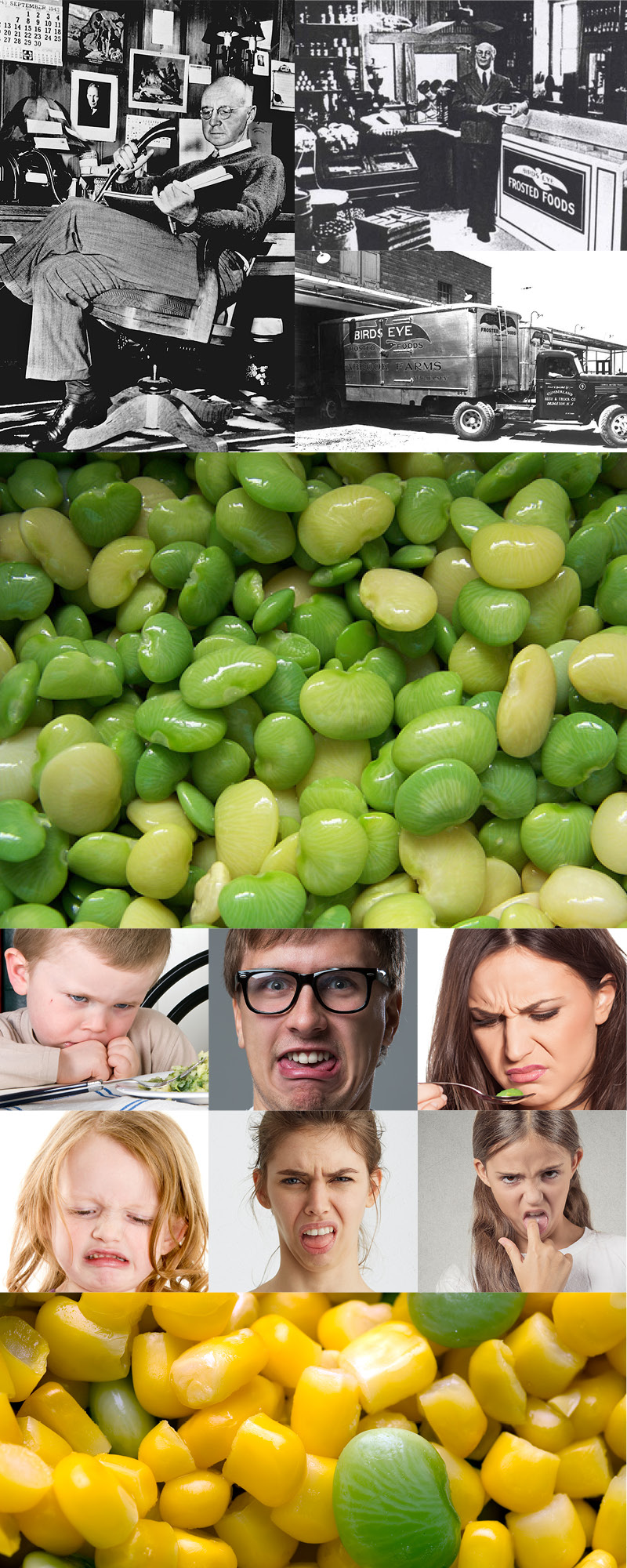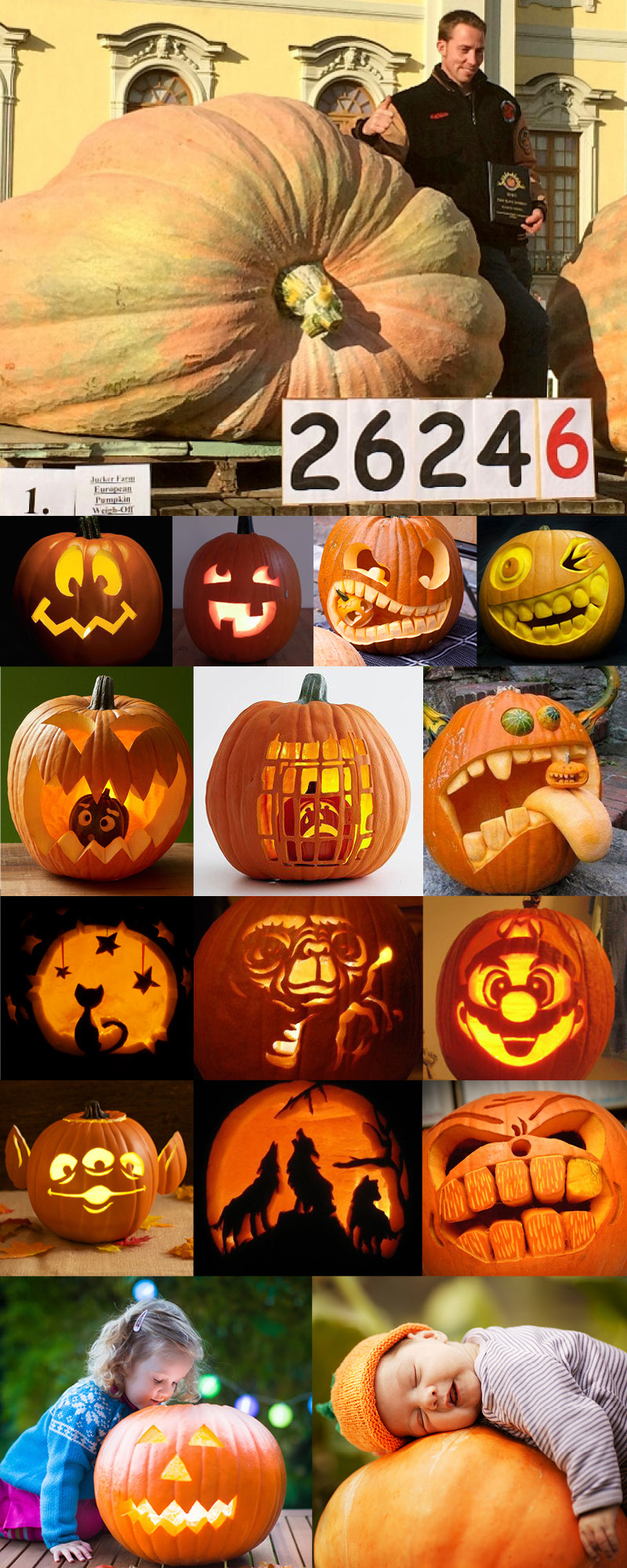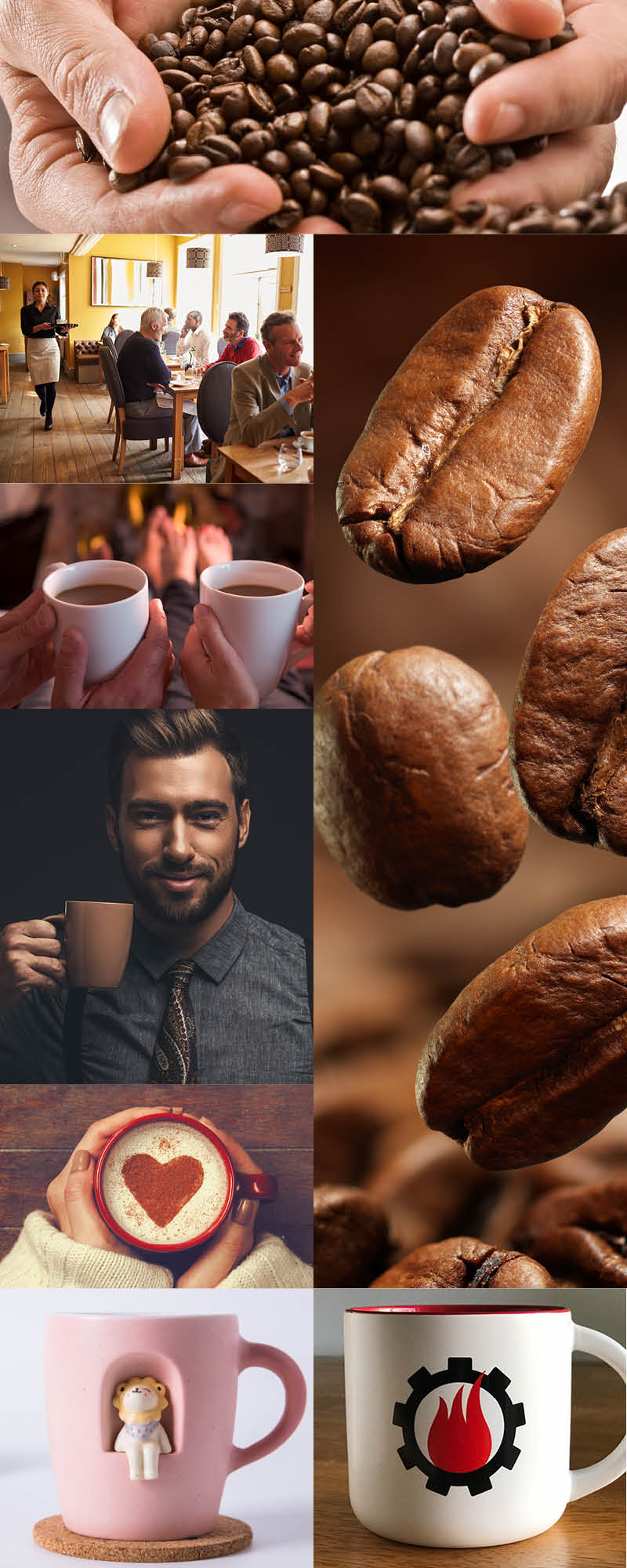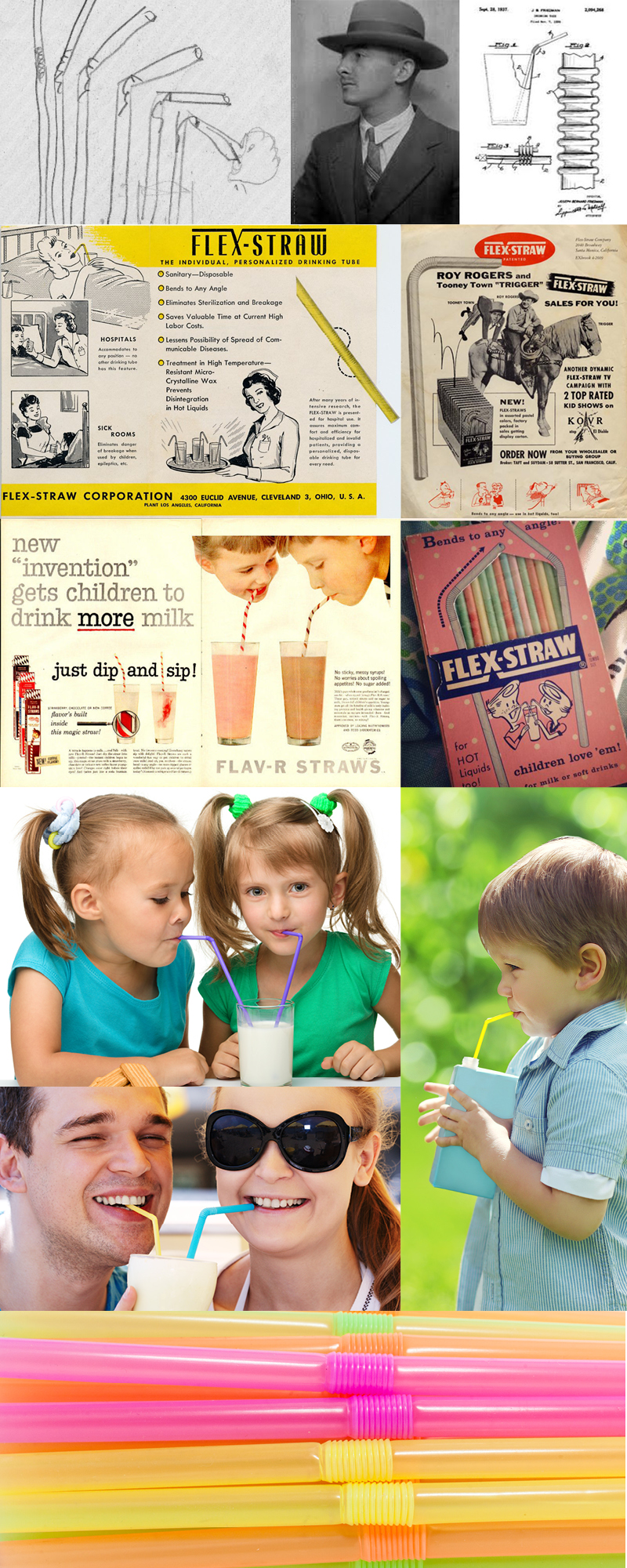Socks history YES — SOCKS !!!
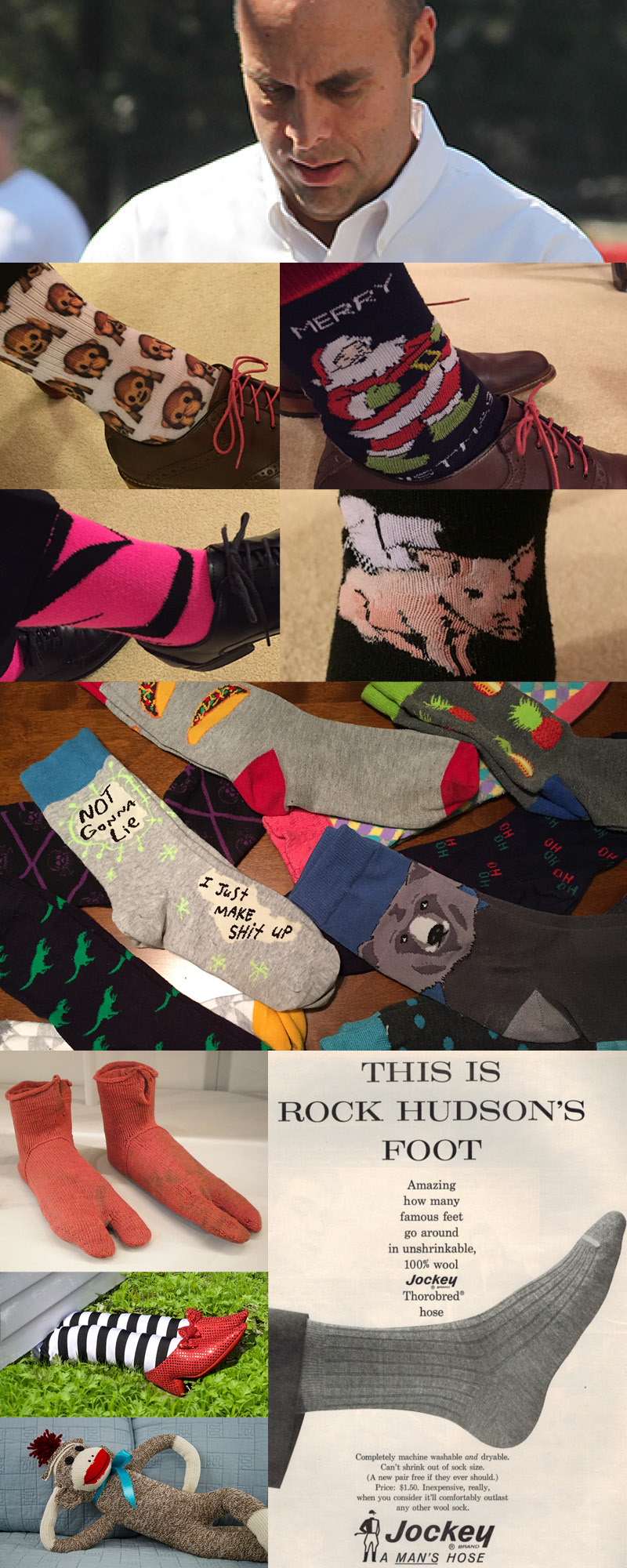
(top) Me, checking to see which socks I wore today (I’m up at 4:00 AM every day and mostly get dressed in the dark); (row two) My monkey socks and my beloved Santa socks (I’ve been known to wear them in July); (row three) Abstracts (goes great with a dark suit) and Flying pigs (because I know that anything’s possible); (row four) Group sox (sorry, couldn’t resist); (row five left) Divided toe socks designed to be worn with sandals in Egypt, 300-499 AD. (Victoria and Albert Museum collection); (row six left) Can you name the owner of those famous socks? (Hint: she melted when a small girl accidentally threw water on her); (row seven left) Make your very own sock monkey. Instructions HERE; (bottom right) A Jockey sock ad from 1963. You can buy it on Etsy.com for $5.95. (I’m sure it’s still there)
Yep, it’s that time of year, when we start thinking about and heading out to get those pesky holiday gifts for our loved ones. The merchants can’t help themselves either, with all the increased flyers, ads and messages to come and spend your money with us. Have you noticed, what used to be a on day event (Black Friday), has turned into two weeks of “Black Friday” deals. Amazon predicts this year it will process over 35% of the projected $100 billion dollars of online sales, up about 13% from last year. So, as a follow-up to my fashion post, I wanted to share my personal Christmas morning favorite – socks. I let Jackie and the girls know, if you get stuck on what to get me, you can skip the underwear, gloves, scarf and craft beer sampler, and just add to my collection. For me, it’s just fun to open my drawer in the morning and ponder the socks I’m going to wear that day –serious or not for the banker meeting, moose, stars or art designs to the architect’s meeting, or just silly and fun for the staff meeting. I now actually have special socks for various occasions. It all started years ago when one of my daughters decided that “Dad” should be able to wear fun socks too! Since that time socks have become my thing! They certainly make a great conversation starter. Thanks Wikipedia for the history lesson.
The modern English word sock is derived from the Old English word socc, meaning “light slipper”. This comes from the Latin soccus, a term to describe a “light, low-heeled shoe” worn by Roman comic actors, and deriving from the Ancient Greek word sykchos.
Socks have evolved over the centuries from the earliest models, which were made from animal skins gathered up and tied around the ankles. According to the Greek poet Hesiod, in the 8th century BC, the Ancient Greeks wore socks called “piloi”, which were made from matted animal hair. The Romans also wrapped their feet with leather or woven fabrics.
Around the 2nd century AD, the Romans started sewing the fabrics together making fitted socks called “udones”. By the 5th century AD, socks called “puttees” were worn by holy people in Europe to symbolize purity.
During the Middle Ages, the length of trousers was extended and the sock became a tight, brightly-colored cloth covering the lower part of the leg. Since socks didn’t have an elastic band, garters were placed over the top of the stockings to prevent them from falling down. When breeches became shorter, socks began to get longer and more expensive.
By 1000 AD, socks became a symbol of wealth among the nobility. From the 16th century onwards, an ornamental design on the ankle or side of a sock has been called a clock.
Footwraps, pieces of cloth that are worn wrapped around the feet, were worn with boots before socks became widely available. They remained in use by armies in Eastern Europe up until the beginning of the 21st century.
The invention of a knitting machine in 1589 meant that socks could be knitted six times faster than by hand. Nonetheless, knitting machines and hand knitters worked side by side until 1800.
The next revolution in sock production was the introduction of nylon in 1938. Until then socks were commonly made from silk, cotton and wool. Nylon was the start of blending two or more yarns in the production of socks, a process that continues today.
Socks can be created from a wide variety of materials, such as cotton, wool, nylon, acrylic, polyester, olefins, (such as polypropylene), or spandex. To get an increased level of softness other materials that might be used during the process can be silk, bamboo, linen, cashmere, or mohair. During the winter, there’s nothing quite like pulling on a pair of thick “fuzzy” socks.
The color variety of sock choices can be any color that the designers intend to make the sock upon its creation. Sock ‘coloring’ can come in a wide range of colors. Sometimes art is also put onto socks to increase their appearance. Colored socks may be a key part of the uniforms for sports, allowing players teams to be distinguished when only their legs are clearly visible.
The township-level district of Datang in the city of Zhuji in Zhejiang Province, People’s Republic of China, has become known as Sock City. The town currently produce 8 billion pairs of socks each year, a third of the world’s sock production, effectively creating two pairs of socks for every person on the planet in 2011.
Today socks are manufactured in a variety of lengths. Bare or ankle socks extend to the ankle or lower and are often worn casually or for athletic use. Bare socks are designed to create the look of “bare feet” when worn with shoes. Knee-high socks are sometimes associated with formal dress or as being part of a uniform, such as in sports (like football and baseball) or as part of a school’s dress code or youth group’s uniform. Over-the-knee socks or socks that extend higher (thigh-high socks) are today considered female garments. They were widely worn by children, both boys and girls, during the late-19th and early-20th centuries., although the popularity varied widely from country to country
A toe sock encases each toe individually the same way a finger is encased in a glove, while other socks have one compartment for the big toe and one for the rest, like a mitten; most notably Japanese tabi. Both of these allow one to wear flip-flops with the socks. Leg warmers, which are not typically socks, may be replaced with socks in cold climates.
A business sock (boring!!) is a term for a colored sock for conservative appearance and casual footwear. The term is often used loosely to indicate a term for a conservative office setting. For instance, business socks, business shirts and business shoes are used for office and job. These socks usually have patterns and are known to be a cause for bleach stains in laundry machines due to their colored manufacturing process and dyed attributes.
Most sports will require some sort of sock, usually a tube sock to protect one’s legs from being scraped while participating in sport activities. In basketball, tube socks are worn, and in lacrosse, mid-calf socks are required. In football, knee socks are used, mostly to stop grass burns. In soccer, socks are used to hold shin guards and to help the referee identify teams during in-close ball tackles/challenges.
Among Muslims, socks have initiated a discussion about the intricacies of wudhu, the formal washing carried out before prayer. Some Muslim clerics, mindful of possible hardship among Muslims in inhospitable circumstances, have issued Muslim edicts permitting practicing Muslims to wipe water over their sock or sprinkle their sock. This would allow prayer where there are no seating facilities, or if there is a queue.
A sock is also used as a holiday item during Christmas. Children hang a large ceremonial sock called a Christmas stocking by a nail or hook on Christmas Eve, and then their parents fill it with small presents while the recipients are asleep. According to tradition, Santa Claus brings these presents. (I hope your “sock” is filled to the top this year!)
So, now you know what to get me for Christmas! 🙂

 Decorating the house inside and out is so much fun. Sharing in this season gives me a warm feeling, too. (and I do like warm) So whether you go all out or keep it manageable, be sure to enjoy your family, friends and maybe make a donation to folks & organizations who need our help.
Decorating the house inside and out is so much fun. Sharing in this season gives me a warm feeling, too. (and I do like warm) So whether you go all out or keep it manageable, be sure to enjoy your family, friends and maybe make a donation to folks & organizations who need our help.

